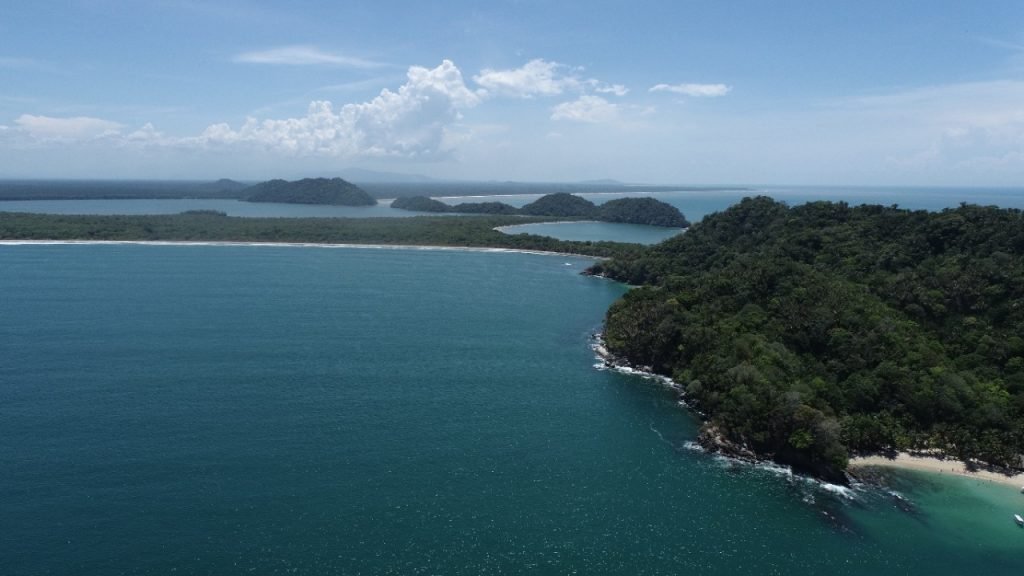
Photo: The Ocean Agency
The Mesoamerican Reef (MAR) System is the largest transboundary coral reef, shared between Mexico, Belize, Guatemala, and Honduras, and the largest in the Atlantic Ocean. It is an ecoregion of biological, economic, social, and cultural importance. It has 67 coastal and marine protected areas (CMPAs) distributed as follows: Mexico, 23; Belize, 25; Guatemala, 8; and Honduras, 11.
Effectively managed CMPAs are one of the best tools for conserving natural resources and ecological processes and reducing threats, which allows for generating development opportunities for local communities. Approximately 72% of the region’s reefs and slightly more than half of the mangrove areas are within protected areas. CMPAs supply water, are habitat for numerous species, reduce the impact of natural disasters, and protect traditional ways of life and cultural and spiritual values, among other goods and services.
To better conduct support to the MAR region, MAR Fund facilitated two regional CMPA prioritization exercises. The first exercise, in 2007, resulted in 14 priority areas (4 in Mexico, 4 in Belize, 2 in Guatemala, and 4 in Honduras). The second exercise (2016) had 14 more protected areas distributed in the same way.
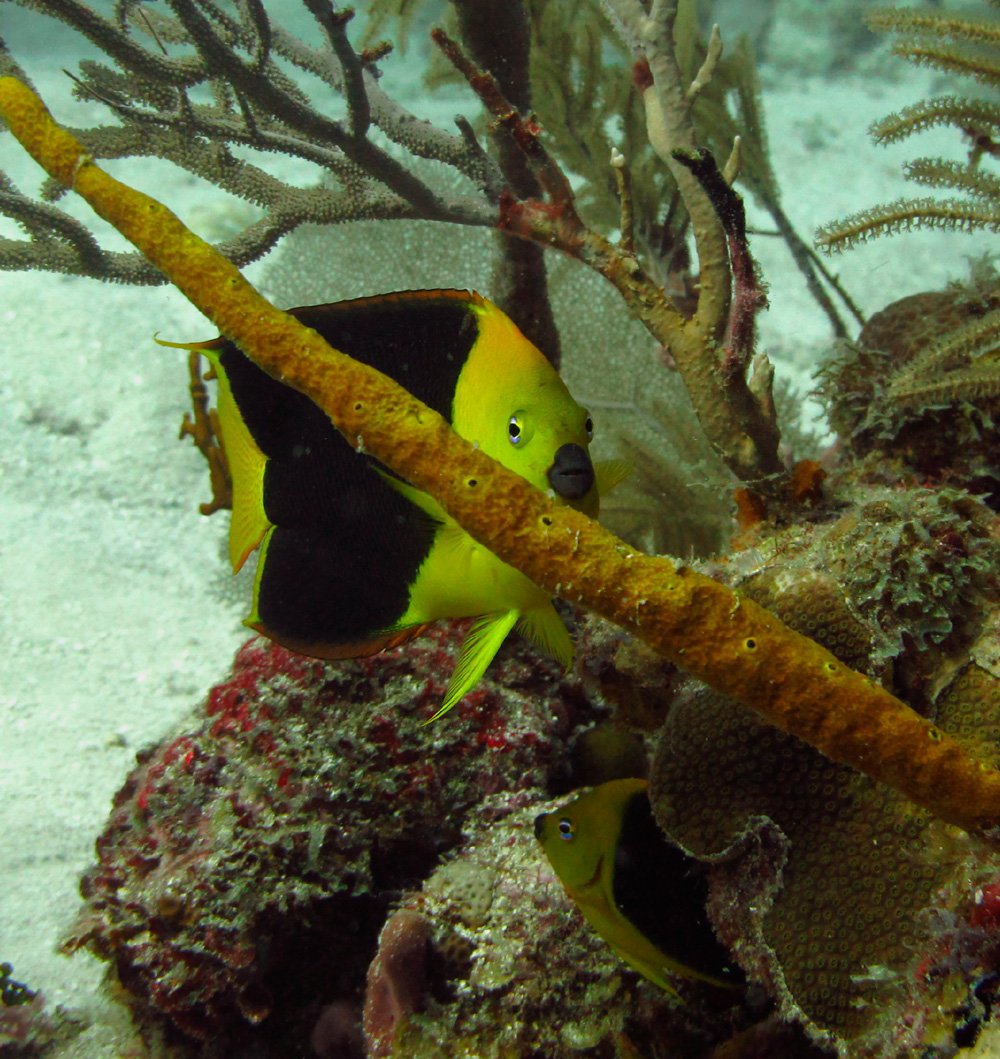
Photo: Elisa Areano
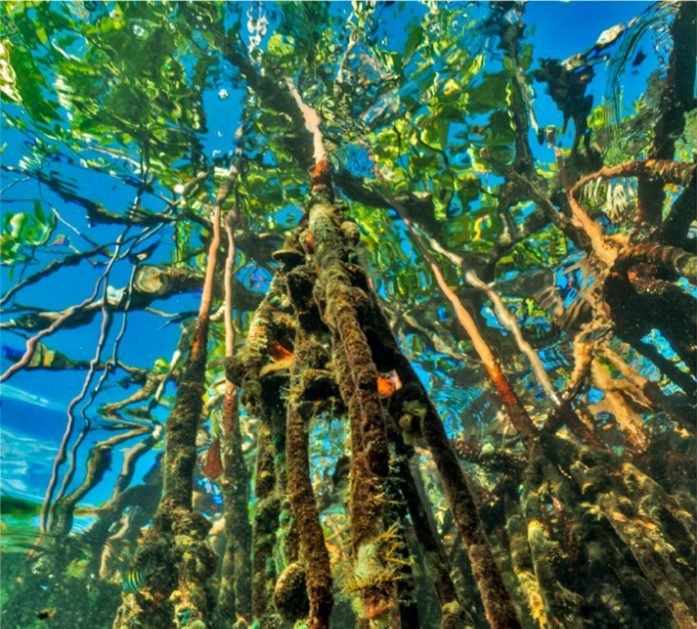
Photo: Fundación Albatros
Within the framework of the Saving Our Protected Areas program, MAR Fund implemented, during the 2012-2020 period, the Project “Conservation of Marine Resources in Central America” Phases I and II, carried out in nine priority CMPAs, with the financial contribution of the German Cooperation through the KfW. The German Cooperation has granted a new financial contribution to implement the Project “Protection of Maritime Resources in Central America III” (Phase III), which aims to maintain the continuity of the experiences of Phases I and II, for a 5-year period.
Phase III is implemented through two calls for proposals aimed at the managers and co-managers of the CMPAs of the MAR:
- The first, launched in July 2023, focused on the 14 CMPAs selected in the second regional prioritization exercise; 12 of them became grantees.
- The second, launched in August 2024 and open to all CMPAs of the MAR (except those selected in the first call for proposals), promoted the submission of joint proposals involving at least two CMPAs. As a result, eight project proposals were approved, involving 16 CMPAs from the MAR.
Indicators

The objective of Phase III is the conservation and sustainable use of natural resources in and between the coastal marine protected areas of the Mesoamerican Reef System. Its compliance is measured through three indicators:
| Indicator O1: | Area in hectares with better conservation1 , |
| Indicator O2: | Area of relevant ecosystems with more sustainable use2 and |
| Indicator O3: | Number of initiatives that support the adaptation of populations vulnerable to climate change. |
[1] The criterion for a more effective conservation is the application of measures to improve biodiversity monitoring, control, and surveillance measures, or ecosystem restoration measures.
[2] Relevant ecosystems in the MAR include coral reefs, mangrove forests, and seagrasses.
Through the implementation of Phase III, it is intended to achieve three results:
- Result 1: The CMPAs have better conditions for the conservation of their natural resources,
- Result 2: Measures implemented for the sustainable use of the natural resources of CMPAs with the participation of the local population, and
- Result 3: Strengthened cooperation among key stakeholders for biodiversity conservation in the MAR.
Compliance with these results will be measured through seven indicators:
- Indicator R1.1: Number of CMPAs implementing best conservation practices,
- Indicator R1.2: Number of people involved in the management of CMPAs with enhanced capabilities,
- Indicator R1.3: Number of selected CMPAs with at least 75% of management effectiveness,
- Indicator R2.1: Number of natural resource use plans developed with the local population under implementation,
- Indicator R2.2: Number of people directly supported by the project who benefit from the sustainable use of natural resources,
- Indicator R3.1: Number of exchange events organized by MAR Fund of which the results were published,
- Indicator R3.2: Number of joint initiatives between CMPAs implemented within the framework of the Project.
FACT SHEETS:
MEXICO:
- 📄 Isla Contoy National Park and Caribe Mexicano Biosphere Reserve
- 📄 Arrecifes de Puerto Morelos National Park
- 📄 Arrecifes de Cozumel National Park and La Porción Norte y la Franja Costera Oriental, Terrestres y Marinas de la Isla de Cozumel Flora and Fauna Protection Area; Selvas y Humedales de Cozumel State Reserve; Laguna Colombia State Ecological Park
- 📄 Laguna Manatí Flora and Fauna State Refuge, Sistema Lagunar Chacmochuch Flora and Fauna State Refuge, and Caribe Mexicano Biosphere Reserve
- 📄 Caribe Mexicano Biosphere Reserve and Xcacel–Xcacelito Sea Turtle Sanctuary Conservation Zone
- 📄 Banco Chinchorro Biosphere Reserve, Arrecifes de Xcalak National Park, Arrecifes de Sian Ka´an Biosphere Reserve and Caribe Mexicano Biosphere Reserve
BELIZE:
- 📄 Turneffe Atoll Marine Reserve
- 📄 Sapodilla Cayes Marine Reserve
- 📄 Gladden Spit & Silk Cayes Marine Reserve
- 📄 Half Moon Caye Natural Monument, Blue Hole Natural Monument and Fish Spawning Aggregation sites: Sanbore, Northern Two Caye, Half Moon Caye Wall y South Point
- 📄 Corozal Bay Wildlife Sanctuary and Santuario del Manatí Bahía de Chetumal State Reserve
GUATEMALA:
- 📄 Bocas del Polochic Wildlife Refuge
- 📄 Cerro San Gil Springs Reserve
- 📄 Río Sarstún Multiple Use Area, Punta de Manabique Wildlife Refuge, and Cayman Crown No-take Zone
- 📄 Río Dulce National Park and Punta de Manabique Wildlife Refuge
HONDURAS:
- 📄 Michael Rock Special Marine Protection Zone
- 📄 Cayos Cochinos Marine Natural Monument
- 📄 Cuero y Salado Wildlife Refuge
- 📄 Bahía de Tela Marine Wildlife Refuge
- 📄 Blanca Janeth Kawas Fernández National Park and Punta Izopo National Park
OTHER FILES:
MAR Fund implements measures and actions to ensure that the Project is executed in accordance with the KfW Sustainability Guidelines. To this end, it complies with the Environmental and Social Commitment Plan (ESCOP).
MAR Fund has developed and implemented, since 2022, an Environmental and Social Management System (ESMS) https://marfund.org/en/esms/ under international standards. The purpose of the ESMS is to assess the risk of projects to avoid or minimize adverse environmental and social impacts, and to enhance positive impacts. The ESMS includes a grievance mechanism that can be found at the following link: https://marfund.org/en/esms/#grievance.
Áreas Protegidas Marino Costeras apoyadas
🇲🇽 Mexico
Arrecifes de Cozumel National Park (PNAC in Spanish) and La Porción Norte y la Franja Costera Oriental, Terrestres y Marinas de la Isla de Cozumel Flora and Fauna Protection Area (APFFIC in Spanish), National Commission of Natural Protected Areas (CONANP in Spanish); Selvas y Humedales de Cozumel State Reserve and Laguna Colombia State Ecological Park, Institute of Biodiversity and Natural Protected Areas of the State of Quintana Roo (IBANQROO in Spanish)
Project NameProper management in 4 Coastal Marine Protected Areas in Cozumel Island, in the context of ecosystem connectivity and health, to improve management effectiveness in benefit of biodiversity conservation and sustainable use. Civil Society Organization (CSO)Fundación Comunitaria Cozumel I.A.P. (FCC) Photo: Blanca Quiroa |
Project SummaryThe project aims to increase management effectiveness by 20% in four natural protected areas in Cozumel Island (two of federal order and two of state order) to improve the conservation and sustainable use of the ecosystem services the population depends on. The management of knowledge about the condition of the ecosystems will be strengthened through the implementation of an Integrated Information System for Cozumel (IISC), which will make it possible to identify the needs of the ecosystems and subsequently implement adaptive management with the support of the local population. Accurate and timely information will be available on key aspects and biophysical variables of the island’s ecosystems. In addition, an environmental education and awareness campaign will be carried out for the local population and visitors to improve understanding of the value of the CMPAs ecosystem services and promote better conservation practices through educational programs, events, and mass media. Intersectoral cooperation between the public, private, and social sectors will be strengthened to implement public policies related to water resources and sustainable tourism, guiding conservation processes and sustainable use of natural resources, and strengthening the governance of CMPAs. |
Isla Contoy National Park (PNIC in Spanish), Caribe Mexicano Biosphere Reserve (RBCM in Spanish), National Commission of Natural Protected Areas (CONANP in Spanish)
Project NameSustainable Management and Marine-Coastal Resources Conservation of the Isla Contoy National Park and Northern Zone of the Mexican Caribbean Biosphere Reserve. Civil Society Organization (CSO)Pronatura Península de Yucatán, A.C. (PPY) Photo: Alexis García Rivero |
Project SummaryThe project aims to strengthen four subprograms of the Management Programs of the PNIC and the RBCM. The management capacities of the CMPAs will be improved by conducting a structural and functional diagnosis to identify priority areas in coral reef, seagrass, mangrove, and coastal dunes ecosystems, and adopt standardized monitoring protocols. In terms of surveillance, personnel will be trained and equipped, and experiences will be shared with other areas of the MAR to optimize strategies. In addition, a fisheries management plan will be implemented that will include ecological and socioeconomic analyses of the lobster fishery, and training will be carried out to promote sustainable fishing practices and improve fishermen camps infrastructure. Actions will also be carried out for coral reef restoration, which will include training CMPA personnel in scuba diving and restoration techniques, as well as the formation of a community brigade to respond to extreme weather events that may affect these ecosystems. |
Arrecifes de Puerto Morelos National Park (PNAPM in Spanish), National Commission of Natural Protected Areas (CONANP in Spanish)
Project NameConservation and restoration of marine-coastal ecosystems of Arrecifes de Puerto Morelos National Park, PNAPM. Civil Society Organization (CSO)Flora, Fauna y Cultura de México, A.C. (FFCM) Photo: María del Carmen García |
Project SummaryThe project seeks to strengthen the PNAPM management actions and increase the area devoted to coral reef and coastal dunes restoration, with a focus on climate change adaptation and the active participation of various social sectors. The technical capacities of park rangers and their allies will be improved to comply with PNAPM regulations, through the use of innovative technologies for surveillance, legal strengthening, and the exchange of experiences with other MAR CMPAs. The health status of marine-coastal ecosystems and the efficiency of coral reef and coastal dunes restoration strategies will be evaluated. This process will allow participatory planning of new strategies and increase the area intervened for restoration. In addition, a massive environmental education campaign will be carried out through social media networks, local media, and in-person events to inform the population about the importance of conserving the PNAPM’s marine-coastal ecosystems. |
🇧🇿 Belize
Turneffe Atoll Marine Reserve (TAMR)
Project nameConservation and sustainable use of marine resources in Turneffe Atoll Marine Reserve. Photo: TASA |
Co-managerTurneffe Atoll Sustainability Association (TASA) Project SummaryTASA will implement a project with the participation of fishing cooperatives and the seven communities in the CMPA buffer zone. The project will support the strategies of the management plan and address illegal fishing in no-take zones by training park rangers, the acquisition of key equipment, and integration of innovative technology into their control and surveillance activities. In addition, new fish replenishment zones will be demarcated, and education and awareness of the protected area’s zoning will be increased. To reduce overfishing, economic alternatives for fishermen will be promoted, such as the expansion of seaweed mariculture in Turneffe. |
Sapodilla Cayes Marine Reserve (SCMR)
Project nameEnhancing Protection and Conservation of Commercial Species, Coral Reefs, and Fish Spawning Aggregation Sites in Sapodilla Cayes Marine Reserve, Belize. Co-managerToledo Institute for Development and Environment (TIDE)
Photo: Edwin Cabrera |
Project SummaryTIDE will implement the management plan strategies to protect and conserve biodiversity of commercial species and ecosystems of the CMPA, focusing on fish spawning aggregations (FSA), including the new Cayman Crown area. This project will involve key groups from Belize, Guatemala, and Honduras, and will benefit the fishing communities that depend on this area. Activities will be carried out to address illegal transboundary fishing in no-take zones and FSAs, using innovative surveillance technology, as well as the declaration and protection of new FSA sites and the study of key commercial species. Infrastructure will be rehabilitated to ensure the proper functioning of the CMPA. In addition, staff will be trained in methods to address stony coral tissue loss disease (SCTLD) and mitigate its spread. Fishers will be supported to develop alternative livelihoods and alliances with organizations from Guatemala and Honduras will be strengthened. |
Gladden Spit & Silk Cayes Marine Reserve (GSSCMR)
Project nameCAMP BLUE – Cultivating – Conservation, Advanced Diversification, Management, and Protection of Blue Economies within the Gladden Spit and Silk Cayes Marine Reserve.
Photo: SEA |
Co-managerSouthern Environmental Association (SEA) Civil Society Organization (CSO)Humana People to People Belize (HPPBZ) Project SummaryThe project aims to improve the effectiveness of the protected area’s management through the participation of communities, the public and private sectors. To address illegal fishing and overfishing, innovative technologies will be used and the community will be trained in their use. Key equipment will be purchased to improve their control and surveillance activities and community participation will be encouraged through a program of researchers who will collect data for adaptive management. To address unsustainable tourism practices, guides and operators will be trained in regulations and best practices. The necessary infrastructure will also be rehabilitated to ensure the proper functioning of the CMPA. |
🇬🇹 Guatemala
Bocas del Polochic Wildlife Refuge (RVSBP in Spanish)
Project nameTowards effective governance and sustainable and participatory management of wetlands in the Bocas del Polochic Wildlife Refuge, Izabal, Guatemala. Co-managerFundación Defensores de la Naturaleza (FDN)
Photo: Rocío Paz |
Project SummaryThe project aims to ensure that management decisions in the Bocas del Polochic Wildlife Refuge are based on up-to-date information and tools, strengthening the environmental and social management of the protected area. Standardized methodologies for biological monitoring of birds, fish, water quality, and manatees will be developed, and governance will be improved through collaborative surveillance strategies. A forest restoration plan will be designed that includes biological connectivity zones and a plan for sustainable use of firewood, developed in conjunction with government entities and local stakeholders. In addition, activities will be carried out to strengthen community adaptation to climate change and promote the sustainable use of resources. Spaces for exchange and coordination among stakeholders will be reactivated to improve the management of natural resources and protected areas. |
Cerro San Gil Springs Reserve
Project nameStrengthening Conservation, Connectivity and Sustainable Management actions in Cerro San Gil Springs Reserve. Co-managerFundación para el Ecodesarrollo y la Conservación (FUNDAECO)
Photo: FUNDAECO |
Project SummaryThe project aims to achieve long-term sustainability of Cerro San Gil Springs Reserve by improving management effectiveness and increasing the participation of local stakeholders. A connectivity approach will be adopted between Cerro San Gil, Santo Tomás de Castilla Bay and, Río Dulce National Park (From ridge-to-reef). The forests of the upper basin will be protected and restored, the protection of coastal-marine habitats will be strengthened with local participation, personnel will be trained in surveillance and protection of coastal areas, fish replenishment zones will be established in a participatory manner, and community projects will be implemented to improve the quality of life and resilience to climate change, prioritizing women and young people. In addition, the development of a strategy to reduce plastic pollution in the Amatique Bay will be promoted, working with communities and municipalities to manage waste. Sustainability mechanisms and investments in ecotourism and payments for environmental services will be developed. |
🇭🇳 Honduras
Michael Rock Special Marine Protection Zone
Project NameStrengthening actions for the conservation and sustainable use of coastal marine resources in Guanaja. Co-managerBay Island Conservation Association (BICA)
Photo: Cristina Cáceres |
Project SummaryThe project focuses on the conservation and sustainable use of marine-coastal resources, addressing ecosystem restoration and promoting the declaration of two sites of importance for wildlife where there are FSAs. It will include the development of a waste management plan, as well as the development of communication and environmental education strategies. Economic alternatives to fishing will be sought for the communities, mangroves will be restored, the management effectiveness of the area will be analyzed, and marine water quality will be studied for science-based management decisions. Local stakeholders such as community savings clubs, students, and community boards will participate in the project, indirectly benefiting the entire population of Guanaja. |
Archipiélago Cayos Cochinos Marine Natural Monument
Project NameStrengthening the management, conservation and connectivity of Fish Spawning Aggregation (FSA) sites through protection, community participation, and research in the Cayos Cochinos Marine Natural Monument, Cuero y Salado Wildlife Refuge and Bahía de Tela Marine Wildlife Refuge.
Photo: Abraham Canaca |
Co-managerFundación hondureña para la Protección y Conservación de Cayos Cochinos Project SummaryThe project will strengthen the protection of FSA sites against illegal fishing by equipping boats and training park rangers for surveillance activities, as well as conducting studies on the status of FSA sites. Public awareness will also be promoted by training local communities in catch monitoring techniques and marine governance and access rights to fishery resources will be strengthened. Conservation will be promoted by updating the protection plans of three CMPAs. In addition, the Roatán Banks site will be included in the ministerial agreement for fishing closures to promote its protection. |
Barras de Cuero y Salado Wildlife Refuge
Project NameImprovement of the ecological integrity of the Cuero y Salado Wildlife Refuge with a focus on biological and social connectivity.
Photo: FUCSA |
Co-managerFundación Cuero y Salado (FUCSA) Project SummaryThe project aims to establish effective mechanisms for the integrated management of the CMPA, addressing threats to mangroves, wetlands, river systems, and reefs. Studies will be conducted to understand the loss of river flow, a proposal will be designed to establish Fish Replenishment Zones (FRZs), and patrols will be improved through the use of innovative technology.
In addition, livelihoods will be diversified through sustainable fisheries and tourism, community emergency response capacity will be strengthened, and financial and social resilience will be promoted. |
Bahía de Tela Marine Wildlife Refuge
Project NameStrengthening of local stakeholders, neighboring communities, and staff of the marine protected area Bahía de Tela Marine Wildlife Refuge, Atlántida, Honduras.
Photo: Mario Motiño |
Co-managerAsociación Amigos de los Arrecifes de Tela (AMATELA) Project SummaryThe project aims to strengthen the local population’s knowledge and participation in the conservation of marine-coastal resources. Local authorities will be trained in application of current regulations, improving the capacities of the personnel in charge of managing the protected area and providing them with the necessary equipment. A public use plan will be developed, tourism service providers will be certified, lionfish population control will be promoted, as well as sustainable fishing through workshops for fishermen and the promotion of responsible practices. In addition, partnerships will be strengthened with co-managers of other coastal protected areas in the northern region of Honduras, such as Fundación Cuero y Salado and the Fundación hondureña para la Protección y Conservación de Cayos Cochinos. |
🇲🇽 Mexico
Reserva de la Biosfera Caribe Mexicano (RBCM), Comisión Nacional de Áreas Naturales Protegidas (CONANP) y Zona Sujeta a Conservación Ecológica Santuario de la Tortuga Marina Xcacel – Xcacelito (STMX-X), Instituto de Biodiversidad y Áreas Protegidas del Estado de Quintana Roo (IBANQROO)
Project NameStrengthening coordination and capacities for the management of the STMX-X transversal biological corridor and the central zone of the RBCM. Civil Society Organization (CSO)Pronatura Península de Yucatán A.C. (PPY).
|
Project SummaryThe project aims to strengthen inter-institutional coordination in the management of the STMX-X transversal biological corridor and the RBCM, in order to improve biodiversity conservation, promote the sustainable use of natural resources, and support the development of local communities.
Studies will be conducted on the condition of key ecosystems (reefs and seagrasses) for future restoration efforts. Invasive species will be controlled, and joint management actions will be implemented between both protected areas. |
Laguna Manatí Flora and Fauna State Refuge, Sistema Lagunar Chacmochuch Flora and Fauna State Refuge, Institute of Biodiversity and Natural Protected Areas of the State of Quintana Roo (IBANQROO in Spanish) and Caribe Mexicano Biosphere Reserve, National Commission of Natural Protected Areas (CONANP in Spanish)
Project NameChacmochuch-Manatí, a coastal-marine corridor that connects nature and people; an ecosystem that provides economy, security, and livelihoods. Civil Society Organization (CSO)Pronatura Península de Yucatán (PPY).
|
Project SummaryThe project aims to improve the Chacmochuch–Manatí Corridor management by strengthening the connection between people and nature, biodiversity conservation (mangroves, seagrasses, and fisheries), and the sustainable use of natural resources. Laguna Manatí will be established as a community observatory for children’s environmental education. An Environmental Surveillance and Control Center will be built, including mobile units, and participatory governance will be reinforced through community guardians. Additionally, technical studies will be carried out to assess ecosystem health, including: a lagoon ecosystem assessment, a pre-feasibility analysis for mangrove restoration, blue carbon estimation, and ecosystem service valuation. These studies will support efforts to strengthen corridor protection at both national and international levels. Also, community development will be promoted through support for sustainable productive projects that provide alternative livelihoods, economic benefits, and reinforce local identity. |
Banco Chinchorro Biosphere Reserve, Arrecifes de Xcalak National Park, Arrecifes de Sian Ka´an Biosphere Reserve and Caribe Mexicano Biosphere Reserve, National Commission of Natural Protected Areas (CONANP in Spanish)
Project NameStrengthening Monitoring and Restoration Actions in Four Marine-Coastal Protected Areas in Southern Quintana Roo for the Conservation and Sustainable Management of Natural Resources in the Mesoamerican Reef System. Civil Society Organization (CSO)Espacios Naturales y Desarrollo Sustentable A.C. (ENDESU)
|
Project SummaryThe project aims to strengthen the conservation and sustainable management of four coastal marine protected areas (CMPAs) in southern Quintana Roo through knowledge and implementing protection, restoration, and/or rehabilitation actions for coral reefs and priority coastal ecosystems such as mangroves, seagrasses, and coastal dunes, with the local communities participation. To achieve this goal, the technical and operational capacities of staff and strategic partners will be enhanced through equipment provision, training, certifications, and experience exchange. A comprehensive assessment of reef health will be developed, and management and restoration actions will be implemented in priority sites, accompanied by an action plan and outreach strategies targeting communities and key stakeholders, including a citizen science program. Additionally, at least two community brigades will be formed and trained to respond to environmental emergencies affecting the priority ecosystems within the four CMPAs. Residents, tourism service providers, and fishers will also be trained in best practices for the sustainable use of biodiversity. |
🇧🇿 Belize
Corozal Bay Wildlife Sanctuary (CBWS) and Santuario del Manatí Bahía de Chetumal State Reserve (RESMBCH in Spanish)
Project NameStrengthening transboundary collaboration for effective fisheries and MPA management in the Corozal/Chetumal Bay Co-managerSarteneja Alliance for Conservation & Development (SACD)
|
Project SummaryThe project aims to strengthen transboundary management between Belize and Mexico in the protected areas CBWS and RESMBCH. To achieve this, the institutional capacity of the responsible organizations – SACD in Belize and the Institute of Biodiversity and Natural Protected Areas of the State of Quintana Roo (IBANQROO in Spanish) in Mexico – will be improved, sustainable fishing will be promoted, and management effectiveness will be increased to 75% in both protected areas. Conservation plans for the Antillean manatee and the blue crab will be implemented, along with monitoring platforms and data exchange. Additionally, surveillance programs will be strengthened using the SMART tool, a fish replenishment zone will be established in RESMBCH, and sustainable fishing and tourism management plans will be developed. Environmental education and community participation will also be promoted through a citizen science program and transboundary training for tour guides and women community leaders. |
Half Moon Caye Natural Monument (HMCNM) and Blue Hole Natural Monument (BHNM) and Fish Spawning Aggregation (FSA) sites: Sanbore, Northern Two Caye, Half Moon Caye Wall y South Point
Project NameEnhancing biodiversity protection zones within and around Half Moon Caye and Blue Hole Natural Monuments for improved management effectiveness. Co-managerBelize Audubon Society (BAS)
|
Project SummaryThe project aims to improve management effectiveness in the HMCNM and BHNM areas through the introduction of innovative surveillance technologies, strengthening of surveillance personnel capacities, and the pilot implementation of HMCNM as a landing site to monitor commercial fishing across the Lighthouse Reef Atoll. To support evidence-based management, the capacities of research staff will be strengthened, new studies on coral reefs and fish spawning aggregation sites will be conducted, and specialized equipment will be installed to enhance monitoring and decision-making. The project recognizes key stakeholders as essential partners for its success. Therefore, their participation will be promoted through community initiatives that improve local well-being, align incentives toward pro-environmental behavior, and raise awareness of existing regulations. The project will contribute to advancing conservation goals, support sustainable use, and foster resilience in the face of challenges posed by climate change and other environmental pressures, enabling informed decision-making for adaptive management in both areas. |
🇬🇹 Guatemala
Río Dulce National Park (PNRD in Spanish) and Punta de Manabique Wildlife Refuge (RVSPM in Spanish), National Council of Protected Areas (CONAP in Spanish)
Project NameBlue Node: North-East Region – A sustainable and innovative governance model to ensure effective management of PNRD and RVSPM, and to support local livelihoods through multi-stakeholder and cross-sectoral coordination Name of the Civil Society Organization (CSO)Alianza de Derecho Ambiental y Agua (ADA2).
|
Project SummaryThe project aims to consolidate an inclusive governance model that promotes the conservation of priority ecosystems, the creation of advocacy spaces, and the establishment of strategic partnerships to improve comprehensive, and sustainable management effectiveness, of two coastal marine protected areas (CMPAs). To achieve this, actions will be implemented focusing on the conservation and restoration of key ecosystems, updating and systematization of biological information, strengthening local governance spaces, boosting of local community economies, and designing and implementing a financial sustainability model for both protected areas. By the end of the project, the goal is to have a consolidated governance model that has contributed to the recovery of territorial governance and the sustainable conservation of natural resources through strong and lasting partnerships. While the project primarily focuses on PNRD and RVSPM, it also includes activities at national and trinational levels (Guatemala, Belize, and Honduras), such as participation in conferences, exchanges, meetings, and workshops. |
Río Sarstún Multiple Use Area (AUMRS in Spanish), Punta de Manabique Wildlife Refuge (RVSPM in Spanish), and Corona Cayman No-take Zone (ZVCC in Spanish)
Project NameStrengthening Participatory Protection Actions for Key Habitats in the Río Sarstún Multiple Use Protected Area, the Punta de Manabique Wildlife Refuge, and Connectivity Zones for the Mesoamerican Reef System. Co-managerFundación para el Ecodesarrollo y la Conservación (FUNDAECO)
|
Project SummaryThis project aims to strengthen the protection of key ecosystems and the connectivity of the Mesoamerican Reef System (MAR) by improving management capacities, enhancing participation and benefits for local stakeholders, and the coordination between the protected areas of Río Sarstún and Punta de Manabique, including Cayman Crown.
The project will provide equipment and basic infrastructure for area management, staff training, the signing of conservation agreements with communities, the strengthening of local capacities, and the development of sustainable productive projects that increase community resilience to climate change. It is expected to achieve a greater management effectiveness of the protected areas, improved conservation of key MAR ecosystems, and increased community resilience as a result of active participation in the sustainable management of coastal marine resources. |
🇭🇳 Honduras
Blanca Janeth Kawas Fernández National Park and Punta Izopo National Park
Project NameEmpowerment and strengthening of local stakeholders, communities, and staff to promote the sustainable management of the protected areas Blanca Janeth Kawas Fernández National Park (PNBJKF, in Spanish) and Punta Izopo National Park (PNPI, in Spanish) Co-managerFundación para la Protección de Lancetilla, Punta Sal y Texiguat (PROLANSATE)
|
Project SummaryThe project aims to strengthen the management of the coastal marine protected areas (CMPAs) through training, equipment provision, and community participation, addressing threats such as overfishing, invasive species, agricultural expansion, and pollution. It is structured around four main components: The project is coordinated with the Strengthening of the National System of Protected Areas of Honduras (SINAPH in Spanish)/LifeWeb Initiative project, funded by KfW, creating synergies that enhance its impact. The project’s activities are aligned with the biannual operational plans of the CMPAs, thereby directly contributing to the protected area management effectiveness evaluation. |
Project Progress
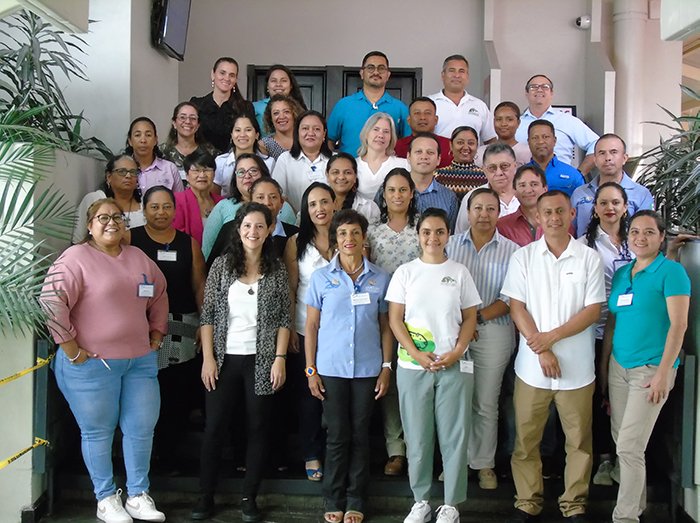 Participants of the initial planning workshop – first call for proposals. Photo: MAR Fund
Participants of the initial planning workshop – first call for proposals. Photo: MAR FundFrom May 28 to 30, 2024, the initial planning workshop was held in Guatemala City for the grantees of the first call for proposals of the project
“Protection of Maritime Resources in Central America III (Phase III)”. Twenty-nine people participated, including technical and administrative staff from the 12 coastal marine protected areas (CMPAs) with approved project proposals, as well as personnel from the civil society organizations (CSOs) that manage the projects in Mexico and Belize, 7 people from the project implementing unit (PIU), and the technical assistant of MAR Fund’s Environmental and Social Management System.
The grantees were trained in the use of the project operations manual (POM), the development of their triennial operations plan (TOP), the use of the online project management system (PMS) for submitting technical and financial reports, how to complete the technical and financial report templates, monitoring of the environmental and social action plan (ESAP), and the grievance mechanisms. Additionally, the workshop provided a space for grantees to get to know each other, share their projects, and identify possible synergies.
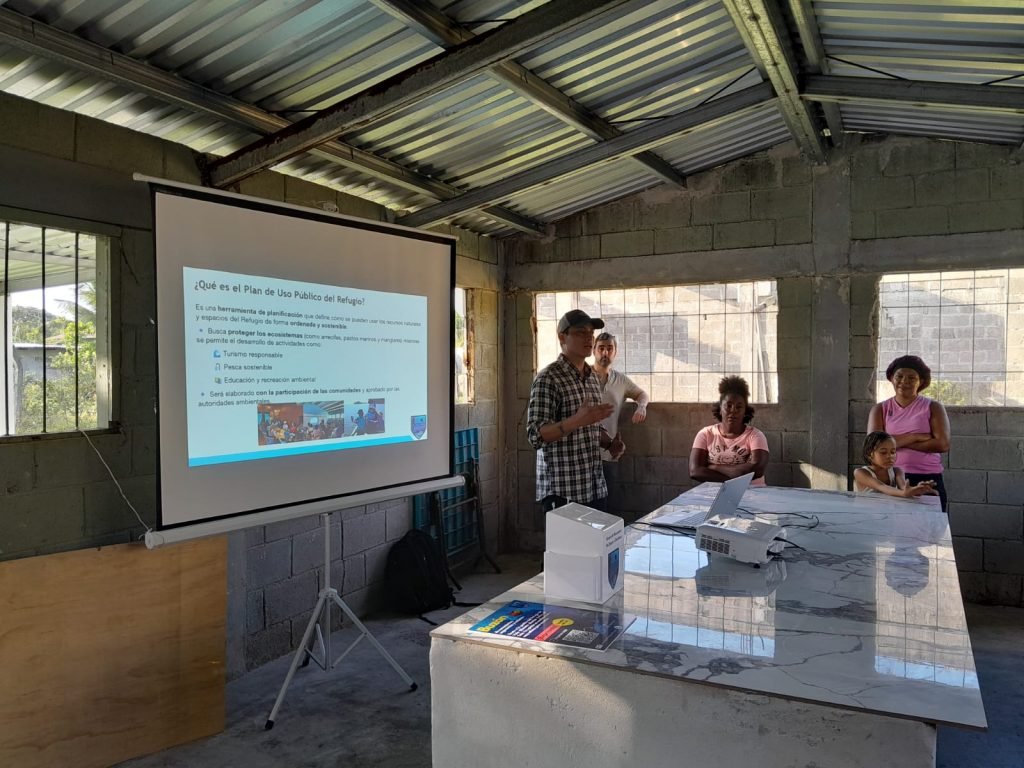 Socialization of the AMATELA project and grievance mechanism. Photo: Daniela Sansur.
Socialization of the AMATELA project and grievance mechanism. Photo: Daniela Sansur.Following the signing of 12 grant agreements, the projects selected in the Phase III first call for proposals began implementation. Three managers of the Mexican coastal marine protected areas (CMPAs) and one co-manager from Belize also signed an agreement with the civil society organization (CSO) responsible for managing their project funds.
The 12 projects have hired their coordinators, are in the process of acquiring necessary equipment to implement activities within the protected areas, and have made progress in developing or refining procedures to mitigate the identified environmental and social risks. To learn more about these projects, visit: CMPAs supported in the first call.
 Reforestation with red mangrove and sapodilla in Barras de Cuero y Salado Wildlife Refuge. Photo: Daniela Sansur.
Reforestation with red mangrove and sapodilla in Barras de Cuero y Salado Wildlife Refuge. Photo: Daniela Sansur.During the second semester of 2024, the Focal Points conducted their first visits to eight projects from the first call for proposals, with the participation of the CMPA directors, project coordinators, and, where applicable, staff from the civil society organizations (CSOs) that manage project funds. During the visits, the Project Operational Manual (POM) was reviewed, along with progress on the Environmental and Social Action Plan (ESAP), and questions were answered regarding the preparation of the Triennial Operational Plan (TOP) and the annual report. In addition, questions were clarified regarding the use of the online Project Management System (PMS) administrative tool for recording income and expenses, and regarding the general guidelines for project implementation.
In April 2025, the Focal Points visited eight CMPAs to monitor project progress, review inventories, follow up on the implementation of the ESAP, and address any questions related to project implementation. During the visits, they accompanied the beneficiaries in various field activities. Some of the highlights included:
In Mexico: The National Commission of Natural Protected Areas (CONANP, in Spanish), the Biodiversity and Natural Protected Areas Institute of the State of Quintana Roo (IBANQROO, in Spanish), and the Attorney General’s Office for Environmental Protection (PPA, in Spanish) met with the Kanan Ka’ak community guardian group to coordinate wildlife monitoring, control and surveillance sites and activities in Cozumel’s federal protected areas. The work sites were defined, primarily within the Isla Cozumel Flora and Fauna Protection Area, and it was agreed that the activities will be carried out from June to November with support from CONANP subsidy programs. This group also participates in activities within the Selvas y Humedales de Cozumel State Reserve with support from the PPA. The data collected will feed into Cozumel Island’s information integration system.
In Guatemala: The Fundación para el Ecodesarrollo y la Conservación (FUNDAECO) conducted an exploratory visit to potential sites that may be proposed as fish replenishment zones in Ensenada San Carlos. The visit spanned the Cacao, San Agustín, and San Carlos rivers, where the bio-barriers are expected to be installed. The area between Ensenada Verde and Casa de la Bahía was also visited to understand the connectivity of the coastal ecosystem and its tourism viability for the sustainability of the Cerro San Gil CMPA.
In Honduras: The Cuero y Salado Foundation (FUCSA, in Spanish) carried out a reforestation campaign with red mangrove (102 plants) and zapotón (121 plants) in the areas known as “El Sitio” and “La Confluencia entre El Espejo and El Olingo,” with support from the Salado Barra community. The association Amigos de los Arrecifes de Tela (AMATELA, in Spanish) held two meetings to present their project and the grievance mechanism. In the community of La Ensenada, seven people participated, and the grievances mailbox was placed in the Health Center. In the community of San Juan, fourteen people participated, and the mailbox was placed in the women’s community center. Both communities agreed to participate in the consultation processes for the development of the Public Use Plan of the Bahía de Tela Marine Wildlife Refuge.
These activities strengthen collaboration between local and institutional stakeholders and represent progress in the implementation of projects in each CMPA.

In January 2024, RedLAC began implementing the project “Strengthening RedLAC through a Coastal-Marine Learning Community” and made progress in its legal registration process in the United States as a nonprofit organization under the 501(c)(3) category. This will allow RedLAC to access international funding and establish itself as a stakeholder in environmental conservation in Latin America and the Caribbean. RedLAC also approved its new bylaws, updated its 2024–2030 institutional strategic plan, and its business plan. On October 9, during the 26th RedLAC Congress held in Saint Lucia, the Coastal-Marine Learning Community was officially launched. At the event, RedLAC environmental member funds reaffirmed their commitment to the protection and conservation of coastal and marine ecosystems. Learn more here.
The Coastal-Marine Learning Community is led by a consortium made up of Conservation Strategy Fund, Conservation Finance Alliance, and Zamia Media. From November 2024 to May 2025, seven training sessions were held, focusing on the following topics:
- Introduction to marine finance solutions
- Restoration of coastal and marine ecosystems
- Enhancing the resilience of coastal and marine ecosystems to climate change
- Sustainable and small-scale fisheries management
- Sustainable livelihoods
- Monitoring, evaluation, and surveillance
- Invasive species
The community has secured the commitment of 11 environmental funds — three regional and eight from Belize, Chile, Colombia, Costa Rica, El Salvador, Mexico, Panama, and Saint Lucia — to strengthen coordination, share knowledge, and develop innovative strategies to address key challenges such as the creation and management of marine protected areas, ecosystem restoration, climate change adaptation, and sustainable livelihoods.
With matching funds provided by MAR Fund, the update of the MARFin financial tool to its version 4 (MARFin V4) was completed in October 2024. This web-based application allows users to model and project the protected areas financial resources by using income and expenses data to identify financial gaps and future needs.
In September 2024, the first virtual training session on the use of MARFin V4 was held for directors and/or administrative staff of CMPAs benefited from the first call of Phase III and/or are among the 18 priority CMPAs of the MAR+Invest initiative. A total of 19 participants were trained in using the tool, with the objective of generating financial projections based on various assumptions and variables.
Later, in November, a second virtual training session was held with support from Phase III. This session included 15 representatives from seven CMPAs of the Mesoamerican Reef System (MAR). Of all the participants across both trainings, 21 individuals belong to nine CMPAs supported by Phase III.
Thanks to an invitation from the KfW, MAR Fund participated in two virtual events focused on exchanging experiences and best practices with regional projects supported by the German Cooperation through KfW.
The first event took place in May 2024, where MAR Fund shared information with the International Union for Conservation of Nature (IUCN) about the project “Protection of Maritime Resources in Central America III” (Phase III). This included the project timeline, lessons learned during the development of technical documents, the start of implementation, and the launch of the first call for project proposals.
The second event was held in February 2025 and brought together implementers of the KfW-supported projects. On this occasion, MAR Fund gave a brief presentation on Phase III and shared its experience in implementing environmental and social safeguards in the projects approved under the first call of Phase III.
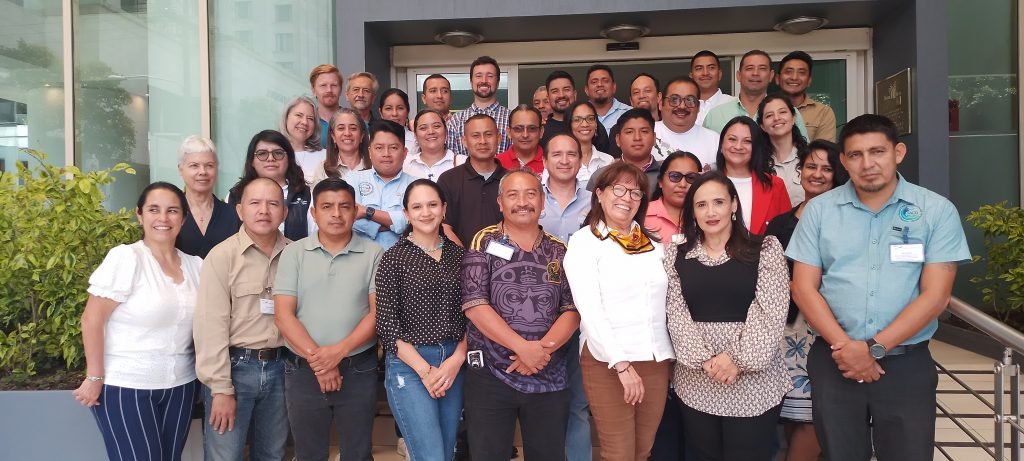 Participants of the initial planning workshop – second call for proposals. Photo: MAR Fund
Participants of the initial planning workshop – second call for proposals. Photo: MAR FundFrom July 1-3, 2025, the Initial Workshop was held in Guatemala City for the projects selected in the second call of the project “Protection of Maritime Resources in Central America III (Phase III)”, an initiative financed by the German Cooperation through KfW, within the framework of MAR Fund’s Saving Our Protected Areas program.
During three days, 31 technical and administrative representatives from 16 marine-coastal protected areas from Mexico, Belize, Guatemala and Honduras met to strengthen capacities, exchange experiences and align strategies for an effective and coordinated implementation of their projects. Civil society organizations that will accompany the implementation of these projects also participated. Read more here.


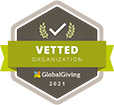
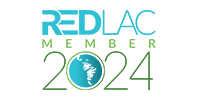


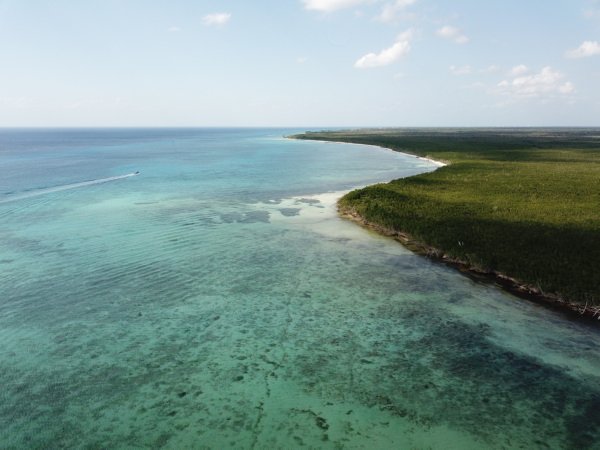


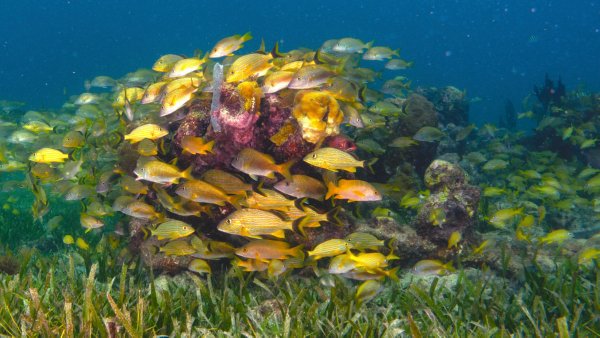
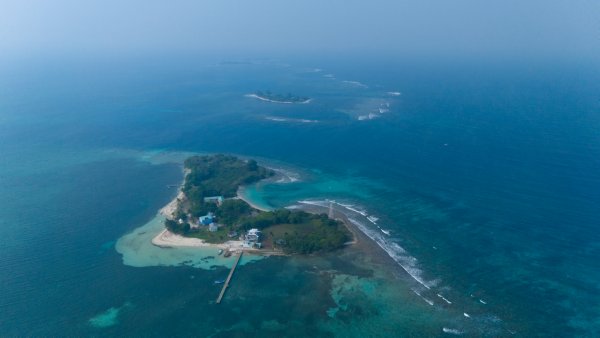
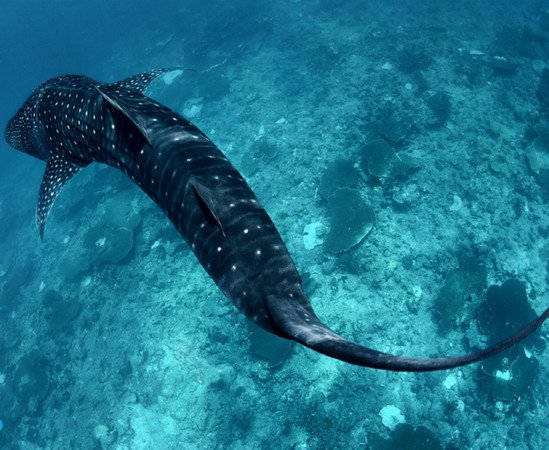
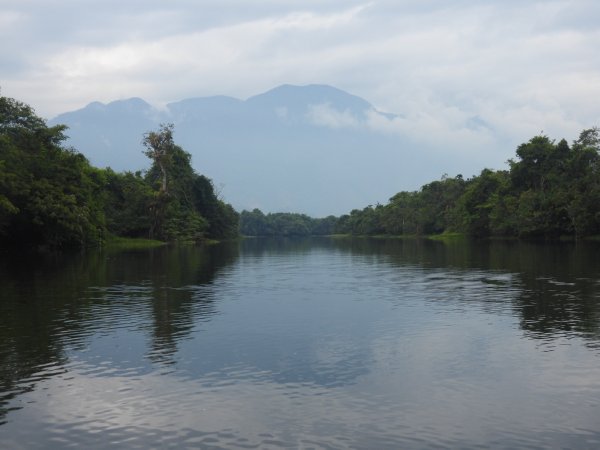
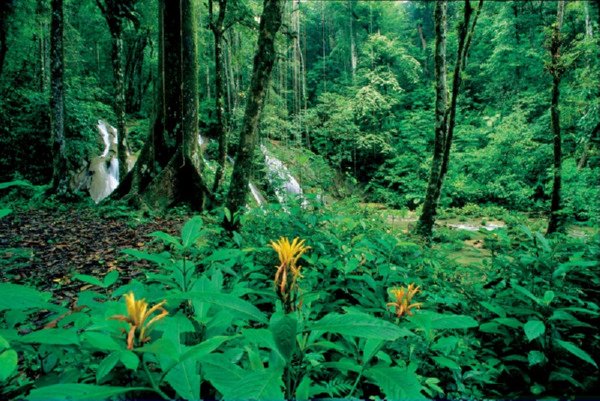
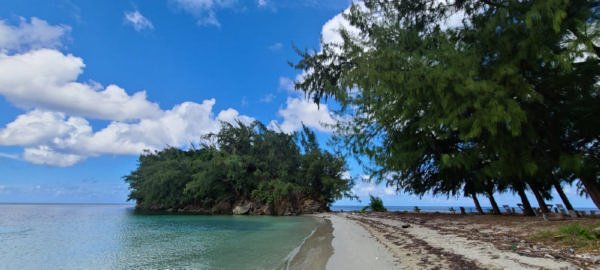

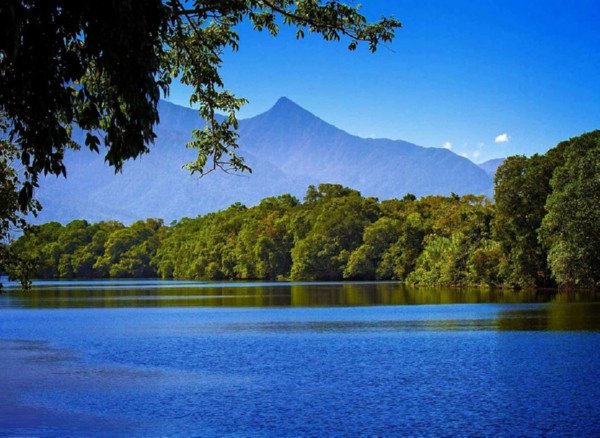
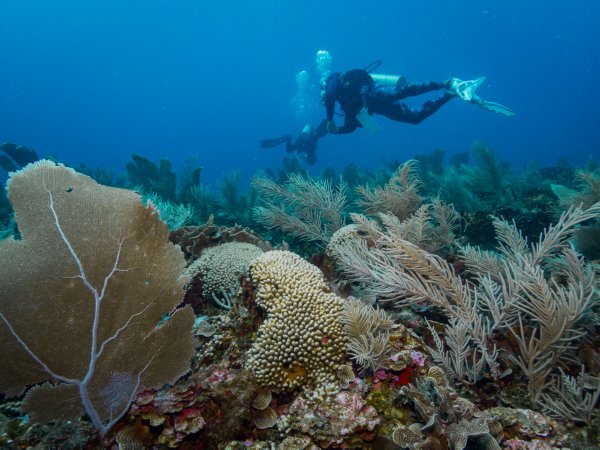
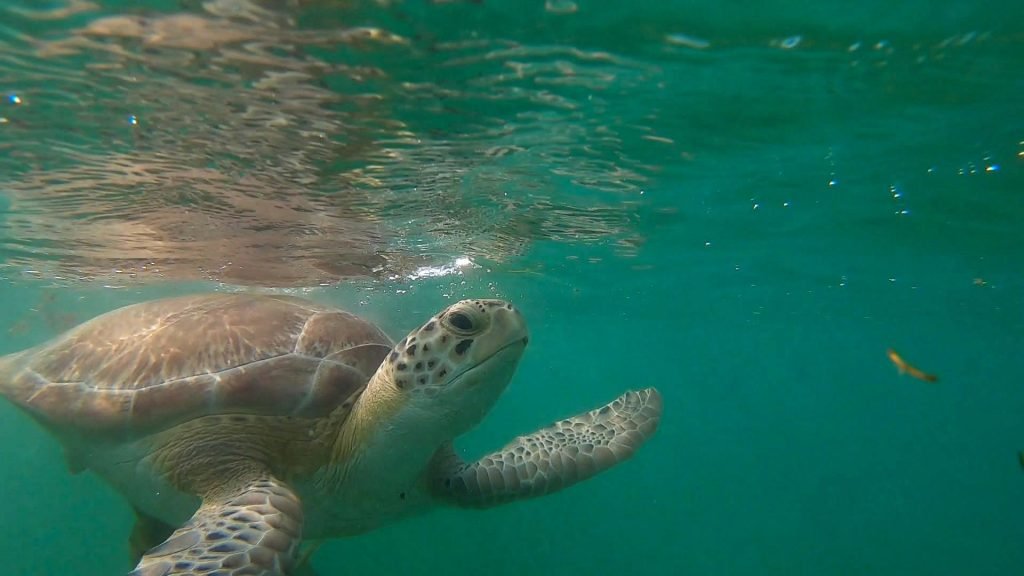 Photo: Teresa V. González
Photo: Teresa V. González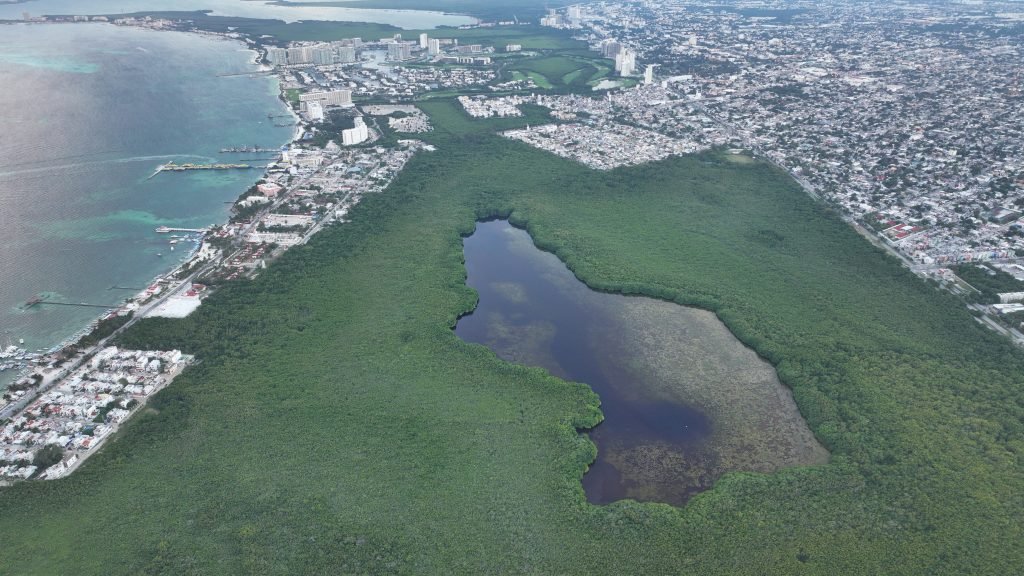 Photo: Gonzálo Aldana
Photo: Gonzálo Aldana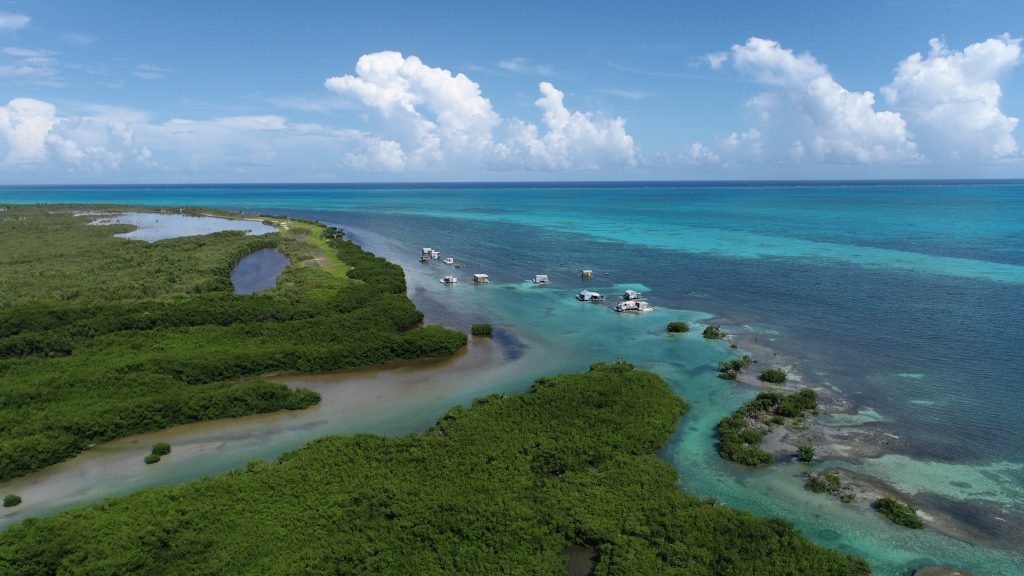 Photo: CONANP
Photo: CONANP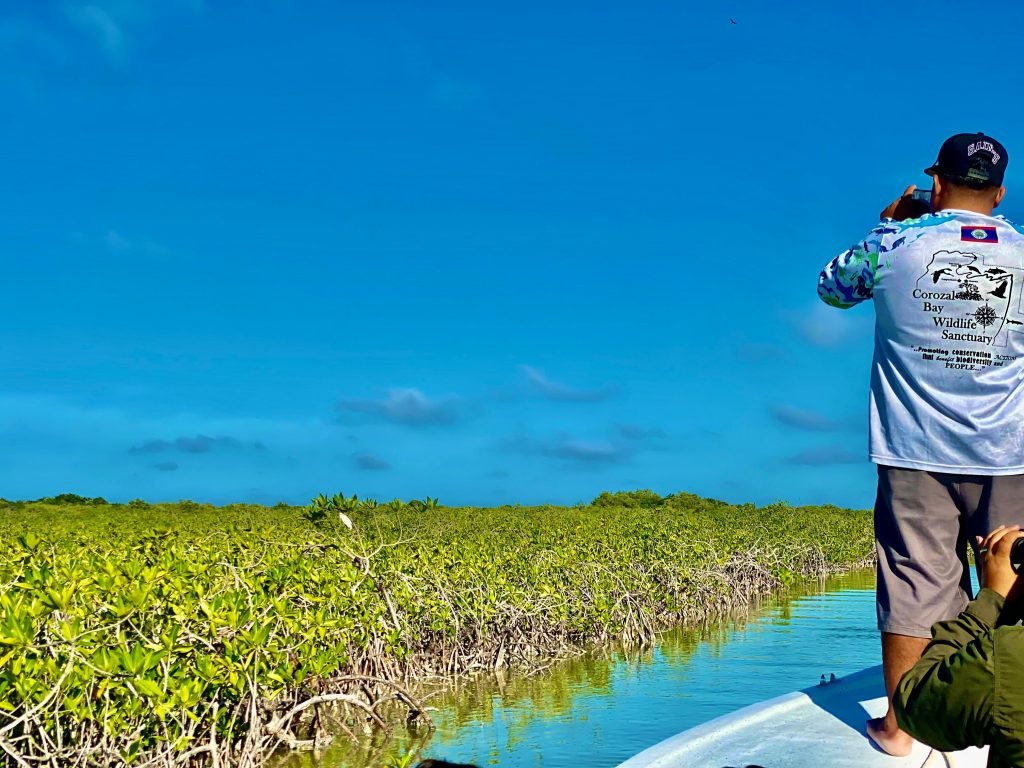 Photo: SACD
Photo: SACD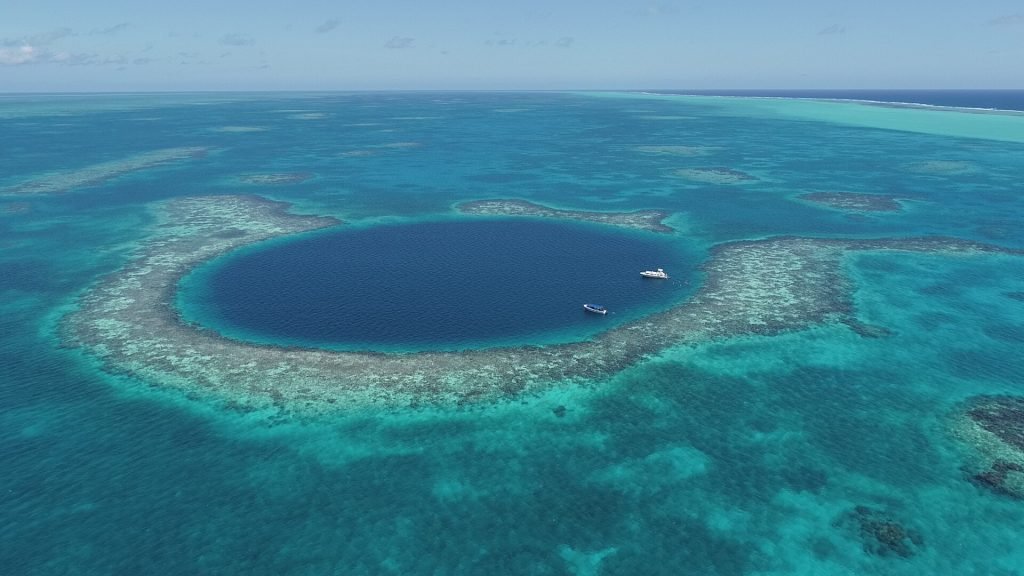 Photo: Belize Audubon Society
Photo: Belize Audubon Society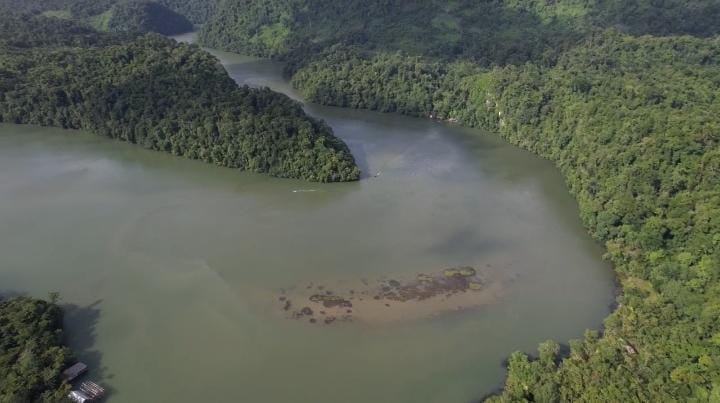 Photo: Eliseo Bo
Photo: Eliseo Bo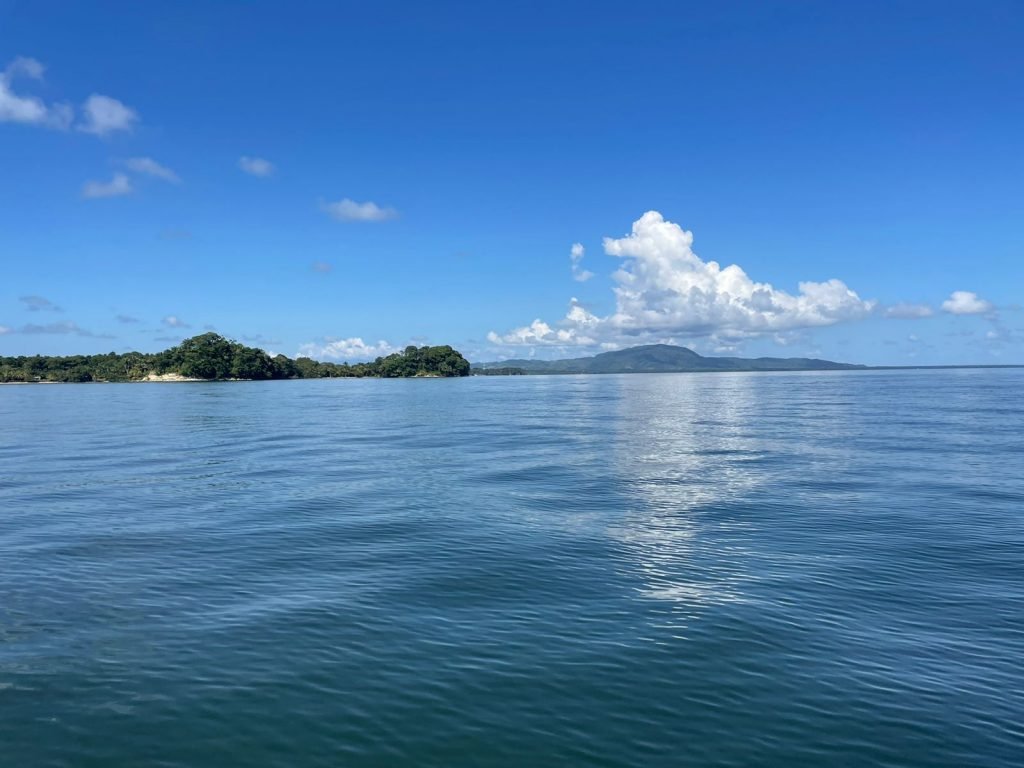 Photo: Emilio Pitán
Photo: Emilio Pitán